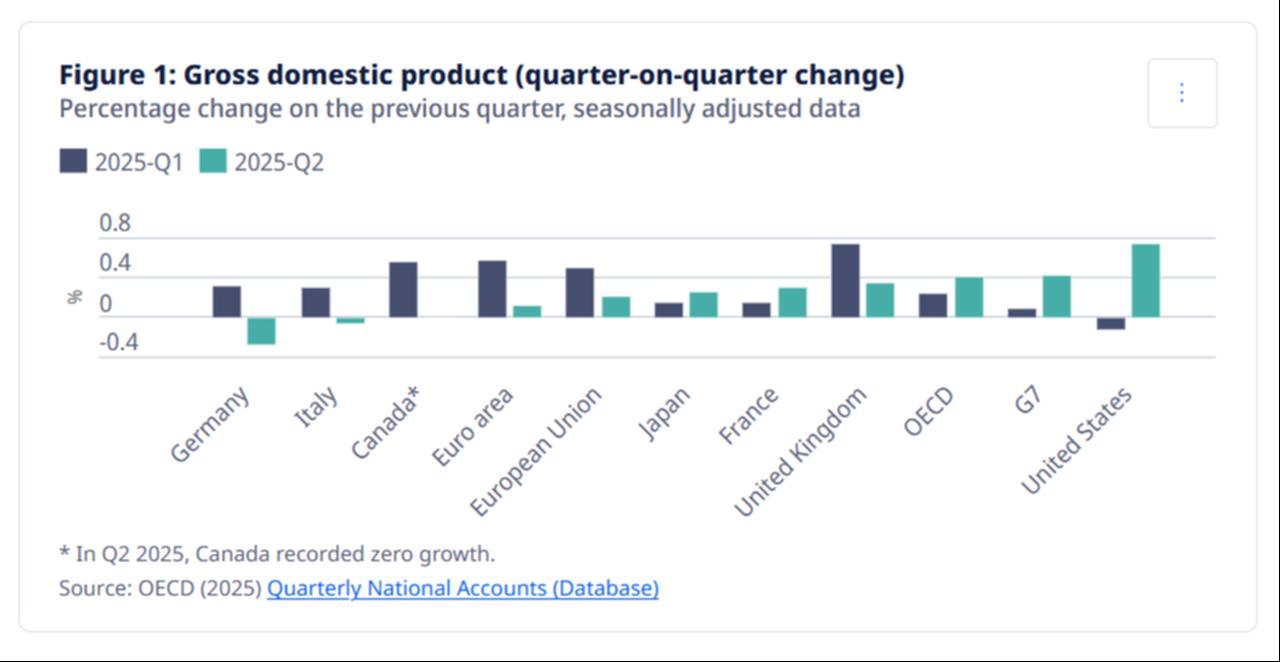
Gross domestic product (GDP) in the OECD area grew by 0.4% in the second quarter of 2025, double the pace of the first quarter, the Organization for Economic Cooperation and Development (OECD) said Wednesday.
OECD's report noted that this pace aligns with the stable growth rates of 0.4% to 0.5% seen in earlier periods.
Year-over-year, GDP across the OECD grew by 1.7%, unchanged from the first quarter. Within the G7, annual growth eased slightly to 1.4%, compared with 1.6% at the start of the year.
G7 economies as a group expanded by 0.4% after edging up just 0.1% in the first quarter. The United States contributed most to the OECD result, with GDP rebounding to 0.7% after contracting by 0.1% in the previous quarter. On an annual basis, the U.S. economy grew by 2%—the strongest performance among G7 members.
France and Japan posted modest quarterly gains of 0.3% each, while their annual expansions stood at 0.7% and 1.3%, respectively. Canada’s growth stalled in the second quarter after a 0.5% rise in the first, though year-over-year GDP still rose by 1.7%.
The United Kingdom slowed from 0.7% to 0.3% quarter-over-quarter, largely due to weaker investment. Compared with the previous year, U.K. GDP expanded by 1.2%.
Germany and Italy both slipped into contraction, with GDP shrinking by 0.3% and 0.1% quarter-over-quarter. Germany’s decline reflected a 0.6% fall in exports, following a 3% rise in the first quarter. Annually, Germany registered just 0.2% growth, while Italy recorded 0.4%.

Of the 23 members with available data, 13 posted stronger growth than in the previous quarter. Ireland experienced the sharpest reversal, contracting by 1% after expanding 7.4% in the first quarter, a shift tied to swings in pharmaceutical exports to the United States. Denmark registered one of the strongest turnarounds, recovering from a 1.3% contraction to 1.3% growth.
Year-over-year, OECD GDP growth remained unchanged at 1.7%. The United States posted the highest annual increase at 2%, while Germany recorded the weakest at 0.2%.
In its previous report, released on Tuesday, the OECD also noted that G20 international goods trade edged higher in the second quarter, with exports up 2.6% while imports remained essentially flat. The downturn in U.S. imports was the main factor shaping global trade flows, with services trade showing stronger momentum, as G20 exports increased by 4.7% and imports rose by 2.9%.